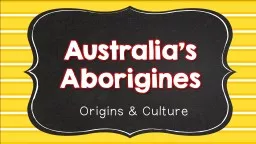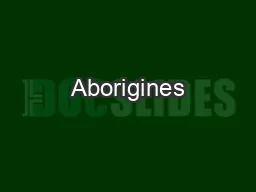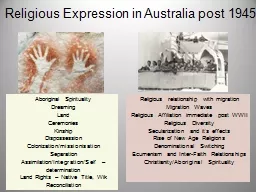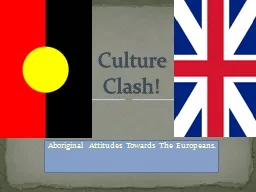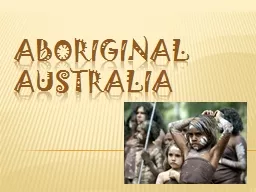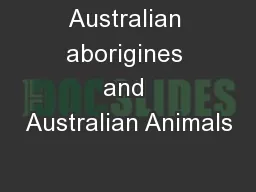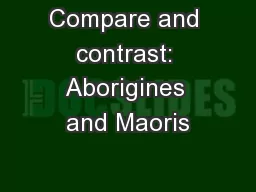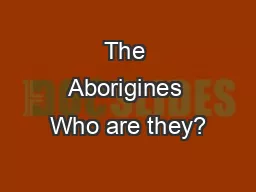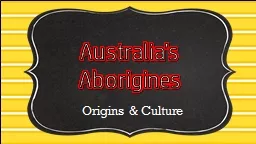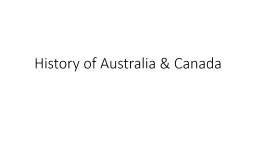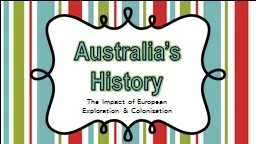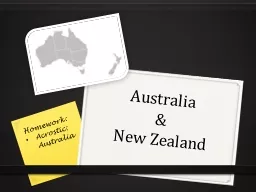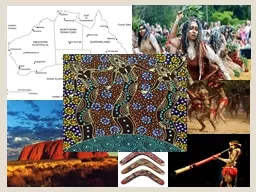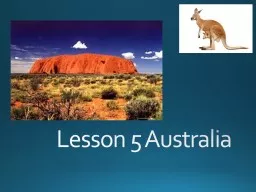PPT-Australia’s Aborigines
Author : frogspyder | Published Date : 2020-10-22
Origins amp Culture Standards SS6H8 The student will describe the culture and development of Australia prior to contact with Europeans a Describe the origins and
Presentation Embed Code
Download Presentation
Download Presentation The PPT/PDF document "Australia’s Aborigines" is the property of its rightful owner. Permission is granted to download and print the materials on this website for personal, non-commercial use only, and to display it on your personal computer provided you do not modify the materials and that you retain all copyright notices contained in the materials. By downloading content from our website, you accept the terms of this agreement.
Australia’s Aborigines: Transcript
Origins amp Culture Standards SS6H8 The student will describe the culture and development of Australia prior to contact with Europeans a Describe the origins and culture of the Aborigines SS6H9 The student will explain the impact European exploration and colonization had on Australia . Indigenous People of Australia. GPS and E.Q.. GPS: SS6H8a. Describe the origins and culture of the Aborigines.. E.Q.: How did the Aborigines adapt in Australia?. Origins. Aborigines. are the . indigenous. Who are they?. Aborigines. “First Australians”. Aborigine: Latin meaning “from the beginning”. When did they come?. When? Debated!. 20,000-60,000 years ago. Maybe up to 100,000 years ago. Where did they come from?. Aboriginal Spirituality. Dreaming. Land. Ceremonies. Kinship. Dispossession. Colonization/missionisation. Separation. Assimilation/Integration/Self –determination. Land Rights – Native Title, Wik. Culture . Clash!. The Aborigines had no idea what to make of the white people. - White people were not part of their ancient stories. - Maybe they were devils or stupid ghosts of their ancestors who could not speak Aboriginal languages. Introduction. The Aborigines of Australia are a relatively well-known culture. They are one of the oldest cultures that are still in existence today. Of the estimated 300,000 Aborigines once living in the Australian bush, there are only 76,000 part-Aborigines, and 45,000 full blooded Aborigines today.. MARIA BALHADDAD 201200806. MAIN POINTS :. Who Animals lives in Australian Forest . . How can the Australian Aborigines Adaptation with Australian Animals .. How Australian Aborigines benefited od Australian Animals .. Use your textbook asg. to complete this Venn diagram.. Then we will look at art, history, and music for both groups and add new information.. Speak. English. warlike. peaceful. Early-nomadic. Early-fish, hunt, farm. Background Information. The word “Aboriginal” was used in Australia to describe its indigenous peoples as early as 1789.. Then the word became common to all indigenous people of Australia. . Today it is only refers to those that are still hunter gatherers. . Origins & Culture. Aborigines. Aborigines are the indigenous people of Australia.. They arrived from Southeast Asia.. The word . aborigines. means “people who were here from the beginning”. . Australian Aborigines. Migrated from Africa to Asia and then to Australia 30,000-40,000 years ago during the last Ice Age. Lower sea levels exposed land between Australia and Asia. Hunter-gatherers who lived in small groups mostly along the. Exploration & Colonization. European Exploration. First Europeans to sail to Australia were the Dutch (Netherlands) in 1606, but they didn’t settle there.. The Dutch made one landing, were attacked by Aborigines, and then abandoned further exploration.. Homework: . Acrostic: Australia. Population Patterns. The People. Aborigines- . Australia. World’s . oldest. . surviving culture. Arrived in Australia . 40-60,00. yrs. ago. About . 2. % of the population. Learning Outcomes. Some will be able to give an historic account of the Aborigines and explain a number of their cultural customs.. Most will be able to describe where the Aborigines live and one of their cultural customs.. 1. st. inhabitants /natives were the aborigine(original people). Believed to have come to Australia some time between 40,000 and 100,000 years ago. Came from Indonesia and Asia. Believed that the land was a sacred gift from the spirits and could not be owned.
Download Document
Here is the link to download the presentation.
"Australia’s Aborigines"The content belongs to its owner. You may download and print it for personal use, without modification, and keep all copyright notices. By downloading, you agree to these terms.
Related Documents

